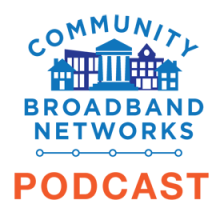Cleveland Residents File Digital Redlining Complaint Against AT&T
Large, corporate providers like AT&T have to make shareholders happy, which is why they shy way from investing in regions where they don’t expect much profit. Routinely, those areas include sparsely populated rural communities and urban neighborhoods traditionally considered low-income. Often low-income neighborhoods also include a high percentage of people of color. Attorney Daryl Parks of ParksCrump, LLC, recently filed suit with the FCC on behalf of three residents in Cleveland who are victims of AT&T's "digital redlining."
The Data Tells The Story
In March, the National Digital Inclusion Alliance (NDIA) and Connect Your Community (CYC) released a report on digital redlining in low-income neighborhoods in Cleveland. “Digital redlining” refers to AT&T’s investments in infrastructure, which improve connectivity in areas where they serve, except for neighborhoods with high poverty rates. CYC and NDIA analyzed form 477 data submitted by the telecommunications company and noticed a pattern. The revelations in that report helped the plaintiffs understand their situation and choose to ask the FCC to look deeper into AT&T's questionable business practices.
The event that inspired the analysis was the AT&T DirecTV merger. As part of the merger, AT&T agreed to create a low-cost Internet access program for customers under a certain income level. The speed tier was only 3 Megabits per second (Mbps) download, but AT&T infrastructure investment in Cleveland lower income neighborhoods was so outdated, residents could not obtain those minimal speeds. As a result, they were deemed ineligible for the program.
The Case
The complainants are three African-American residents in Cleveland’s lower income neighborhoods who can’t take advantage of the affordable program mandated by the merger because they can only access speeds of up to 1.5 Mbps download or less. Without the infrastructure to connect at higher capacity, they’ve ended up paying higher rates for slower Internet access.
In a press release on the complaint, Parks stated:



